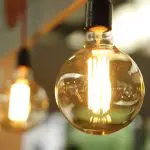Non woven fabrics are a type of fabric that is made from bonding together fibers to create a product that is sturdy and can be used for a variety of purposes.
Non woven fabrics are not recyclable in the traditional sense, but they can be reused or upcycled in many different ways. For example, old non woven fabric can be used as stuffing for pillows or stuffed animals, or it can be cut up and used as rags for cleaning.
Non woven fabrics can also be used as filters in a wide variety of applications, or they can be pressed into shapes and used to form packaging materials.
Whether you are looking for a way to reduce your company’s waste stream or expand its product line, non woven fabrics may be worth considering.
Table of Contents
Why are Non-Woven Fabrics Sustainable?
There are many reasons why non-woven polypropylene carriers and bags are sustainable.
- First, they are environmentally friendly, reusable, and recyclable, with low levels of toxins released in the air or soil.
- Second, the manufacturing process of non-woven polypropylene carriers and bags is low-impact, so the material is environmentally friendly.
- Third, non-woven polypropylene carriers and bags are affordable, lightweight, and highly functional.
One of the most important reasons why non-woven polypropylene carriers and bags are sustainable is that they are reusable. Unlike disposable bags made of paper or plastic, non-woven polypropylene bags can be used multiple times.
This means that they have a much lower environmental impact than disposable bags, since they don’t need to be produced as often.
Another reason why non-woven polypropylene carriers and bags are sustainable is that they are recyclable. Unlike paper or plastic bags, which often end up in landfill sites, non-woven polypropylene bags can be recycled and made into new products. This helps to reduce the amount of waste in landfill sites, and it also means that non-woven polypropylene
Non-Woven Fabric Sustainable Applications
Polypropylene non-woven fabric is a versatile material with a range of advantageous properties, including bacteria inhibition, adsorption, filtration, and warmth. These properties make it an ideal material for a wide range of applications, including medical uses, hygiene products, packaging, and more.
Non-woven polypropylene fabric is also growing in popularity as a sustainable material due to its ability to be recycled and made into new products. This helps to reduce the amount of waste in landfill sites, and it also means that non-woven polypropylene fabric has a lower carbon footprint than other materials.
The personal care industry is the leading sector driving the growth of the non-woven fabrics market. This is due to the fact that non-woven polypropylene fabric is a sustainable material that can be recycled and made into new products.
This helps to reduce the amount of waste in landfill sites, and it also means that non-woven polypropylene fabric has a lower carbon footprint than other materials. The ethical fashion industry is already ahead of the curve in promoting sustainable fashion trends, and it is likely that non-woven polypropylene fabric will become more widely used in the future.
The use of non-woven polypropylene fabric in clothing is a sustainable fashion choice that is good for both the environment and the wearer’s health. Non-woven fabric is made from recycled materials, and it is also biodegradable.
This makes it a much more sustainable choice than other fabrics, such as polyester. In addition, non-woven fabric is breathable and does not trap sweat or other moisture against the skin, making it a more comfortable and healthy choice than synthetic fabrics.
What types of non woven fabrics are recyclable
The majority of non-woven fabrics are recyclable. The most typical type of recycling is mechanical recycling, where the fabric is broken down into small pieces to be used again in new products. Chemical recycling is another option, which uses chemicals to break the fabric down into its component parts.
Are non-woven fabrics disposable?
Yes, many non-woven fabrics are designed to be disposable. This is often the case with products like wipes, pads, and other personal care items. However, some types of non-woven fabric can be reused or recycled.
There are a few different ways to recycle non-woven fabrics. One option is to send the fabric to a company that specializes in recycling these types of materials. Another option is to use the fabric for another purpose, such as creating new products or upcycling it into something else.
The benefits of recycling non-woven fabrics include reducing waste, conserving resources, and preventing pollution. Recycling these materials can also create new jobs and boost the economy.
Conclusion
Sustainability is important for many reasons. Non-woven fabrics are a sustainable option because they can be recycled and reused. They are also a good choice for disposable applications.
There are many different types of non-woven fabrics, and each has its own set of benefits and disadvantages. When choosing a non-woven fabric, it is important to consider the intended use. Some non-woven fabrics are more durable than others, and some are more absorbent.
No matter what type of non-woven fabric you choose, you can be sure that you are making a sustainable choice that will help reduce waste and protect the environment.
- How Does Ring Spun Cotton Affect Garment Fit and Shape Retention? - August 13, 2024
- What Are the Challenges in Producing Ring Spun Cotton? - August 13, 2024
- Is Ring Spun Cotton Suitable for Plus-Size Clothing? - August 13, 2024






